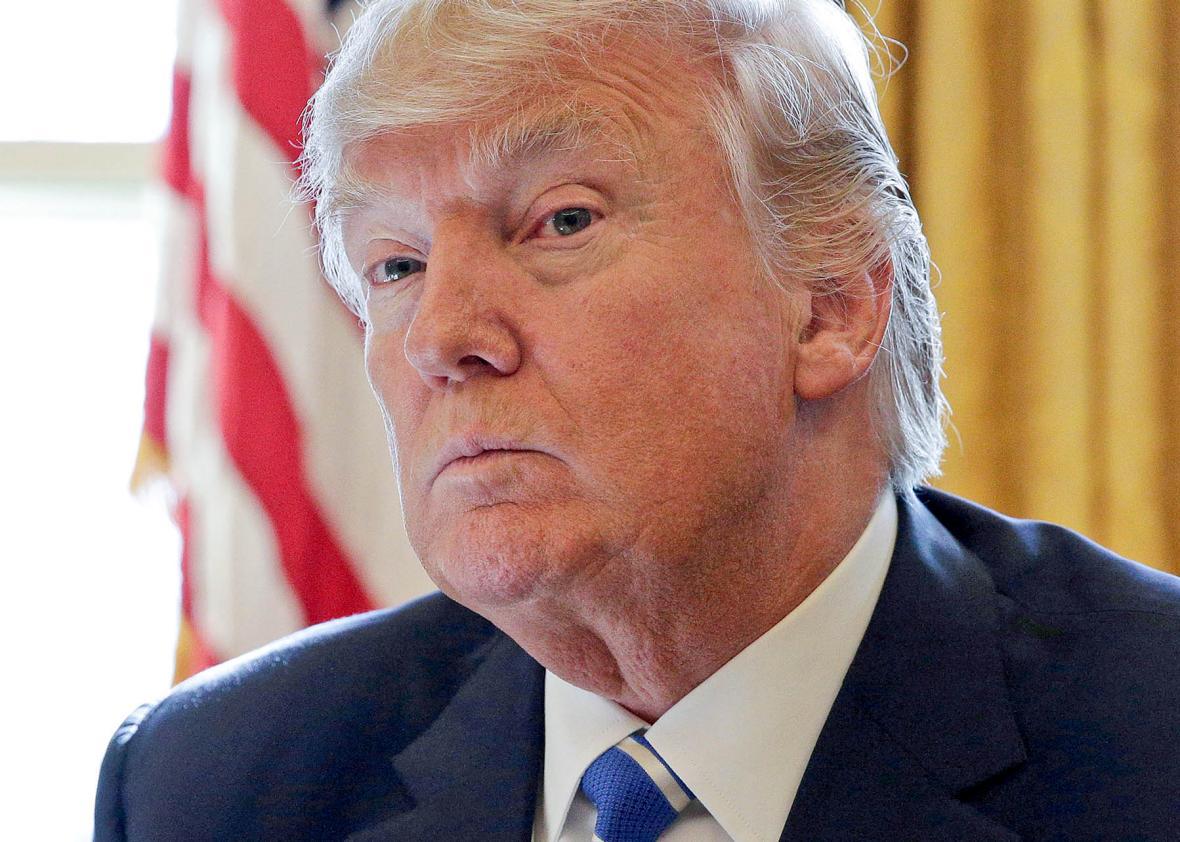During the 2016 campaign, Donald Trump emphasized the importance of unpredictability and criticized President Obama for explaining his proposals in public rather than developing a “secret plan” to defeat the Islamic State. Some of Trump’s early steps, among them placing a direct phone call to the Taiwanese president, putting Iran on notice, and striking at Syrian President Bashar al-Assad in response to a chemical weapons attack, were certainly surprising, and he has received some credit for back-footing America’s adversaries. But as time goes on, Trump appears to be less crazy like a fox than just plain crazy. The longer the administration goes without anchoring this tactic in a broader strategy, the more it risks undercutting U.S. interests and credibility while increasing the likelihood of inadvertently starting a war.
Nowhere is this problem more evident than in eastern Syria, where tensions have been escalating with Assad, Iranian-supported Shiite militias, and Russia. With operations proceeding against ISIS in both Mosul and Raqqa, ISIS is on the verge of collapse. As a result, American-supported forces are coming into closer contact with the coalition supporting Assad even as the common strategic interest of defeating the Islamic State evaporates. An implicit agreement to live and let live has been replaced with a race by all the actors to pick off the remainders of ISIS and position themselves for the aftermath.
The Assad regime and its Iranian patrons have made a decision to fight for this territory. Although he lacks the manpower and capability, Assad still dreams of recapturing all of Syria and returning to the days prior to the civil war. For Iran, this contested territory is important because it can open up a land corridor from Iran to the Mediterranean via Iraq, Syria, and Lebanon.
Most recently, the Assad regime attacked American-supported Syrian Democratic Forces—the Kurdish-led fighters who have been our most effective partner against ISIS—at Tabqa, a critical target given that the Tabqa Dam provides much of Syria’s electricity. This attack led to the United States shooting down a Syrian plane for the first time since the start of the conflict. The Russians are now threatening to shoot down any American plane that crosses the Euphrates River, potentially forcing the United States to choose between significantly curtailing operations against ISIS or calling the Russian bluff. (And it is most likely a bluff.)
This comes on the heels of a number of incidents in eastern Syria in which Iranian militias came too close to U.S. Special Forces that were training an anti-ISIS Sunni force, resulting in defensive American strikes. Ultimately Iranian forces were able to go around U.S. forces and achieve their objective of getting to the Syrian-Iraqi border. And to send an even firmer signal, Iran’s spymaster extraordinaire Qassem Soleimani, head of the Iranian Qods Force, was photographed at the border taunting the United States. Assad’s forces have also escalated against U.S.- and Jordanian-supported moderate opposition forces in southwest Syria, which have created a vital buffer zone while ensuring that Iranian proxies do not establish themselves on the Golan Heights and threaten Israel. And Iran’s missile strikes in response to the recent ISIS terrorist attack in Tehran sent another signal that they plan to be players in eastern Syria.
The U.S. response has been confused. Military commanders in the field have been given the authority to protect themselves and shoot at Syrian, Iranian, and Russian forces that get too close. But there is still no clear policy with regard to how we deal with this increasing competition in eastern Syria. The end result is not a chastened Syria and an Iran that’s afraid to get into a fight with an unpredictable president but instead an adversary that will continue to probe U.S. tolerance and may at some point go too far, triggering a major conflict that nobody wants.
Rather than ambiguity and tough talk, what this situation calls for is clarity. The administration should lay out red lines for Assad, Iran, and Russia, none of whom want a direct conflict with the United States. If we were to communicate that we will not tolerate regime attacks on the Syrian Democratic Forces, we could likely deter future attacks. If we had clarified a month ago that the airspace in eastern Syria would remain under U.S. control, we could have leveraged our adversaries’ fear of Trump’s unpredictability to keep them out. Instead we dithered and they continued to test American resolve while the U.S. position in Syria grew weaker even as the likelihood of conflict increased.
This situation also screams out for a diplomatic solution. Russia does not have the same absolutist objectives as Assad and, unlike Iran, has no strategic imperative to fight for eastern Syria. One would think the Trump administration’s warmer attitude toward the Russians could be leveraged to de-escalate, but so far (outside of deconfliction of air space) there seems to be little effort along these lines.
These tensions also require a direct line to Iran and Assad. But since taking office, the Trump administration has been missing in action when it comes to the diplomatic process for ending the Syrian civil war. After the Obama administration successfully broke through after 35 years of no contact, establishing a direct channel between Secretary of State John Kerry and Iranian Foreign Minister Javad Zarif, the Trump administration has cut that channel off. That means there is no good way to communicate with Iran in a crisis.
Unpredictability and ambiguity can work if they are combined with strategy and diplomacy. But from Trump all we are getting is incoherence. That is a dangerous recipe. The end result in Syria and elsewhere will be, at best, the rollback of American influence and power. At worst, we will stumble into a devastating conflict.
